#Powertrain
Explore tagged Tumblr posts
Text


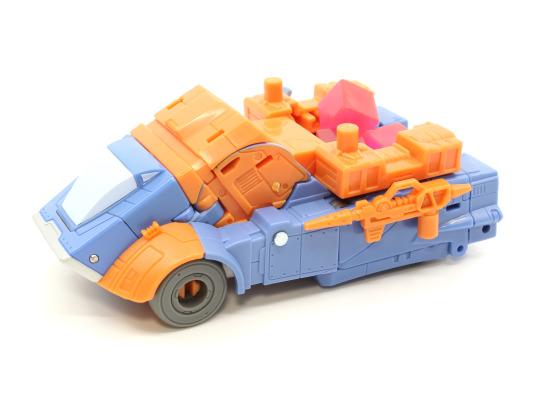
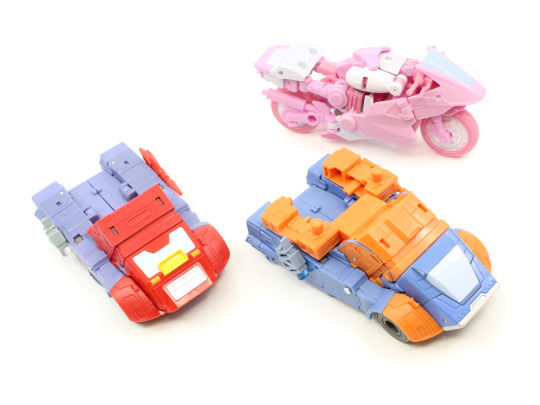




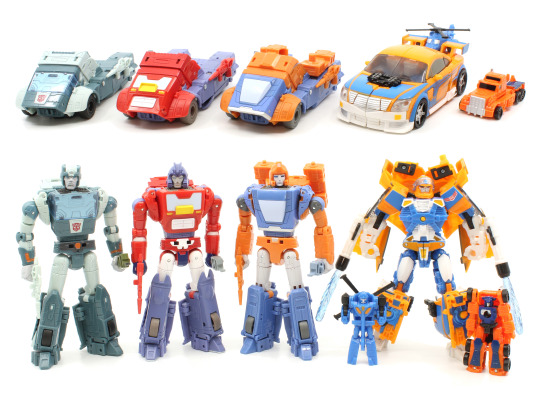

LEGACY EVOLUTION War Dawn: Doin
Can he get a do-over?
More like this:
Timelines Dion
Legacy A Hero is Born Orion Pax
Siege Micromaster Off Road Patrol: Highjump and Powertrain
40 notes
·
View notes
Text

Polestar / Polestar 2 / Powertrain / 2019
3 notes
·
View notes
Text
Posting Colour Coded photos of my Transformers Collection: day 2 Orange!

#transformers#toy photography#orange#grapple#sentinel prime#huffer#wingthing#scoop#bw sandstorm#wheelie#powertrain#Cheeto jazz
6 notes
·
View notes
Text
Horse Powertrain veut reprendre les œuvres de grandes sociétés automobiles
Le fabricant mondial de groupes motopropulseurs de chevaux de moteurs à combustion prévoit de nouvelles collaborations. “Nous sommes actuellement en conversations avec tous les principaux constructeurs automobiles”, a déclaré Matias Giannini, chef du groupe motopropulseur, dans une interview avec Welt Am Sonntag. Il ne s'agit pas seulement de la livraison des moteurs. «Nous sommes prêts à…
0 notes
Text
SIGNS MOU WITH EPLANE TO DEVELOP POWERTRAINS FOR EVTOLS AND DRONEs.

#sona#blw#powertrain#breakingnews#bignews#news#stockmarkets#stockoftheday#stockholder#stocknews#marketgrowth#marketnews#sharebazar#develop#financial#best stock advisory in india#best stock market advisor#sebi registered best stock advisory#sharemarket#investment#SEBI Registered Best Stock Advisory#SEBI Registered Best Stock Advisory and Wealth Creation Services in India#Best Stock Advisory in india
0 notes
Text
MG Comet EV: City-Friendly Electric Vehicle Overview
₹9.23 Lakh The MG Comet EV Exclusive FC is a small but powerful electric vehicle (EV) designed for city driving. Its compact size, combined with advanced technology and eco-friendly features, makes it a highly appealing option for urban commuters. Below is an in-depth analysis of the car’s key attributes. Powertrain and Performance Motor and Transmission: Motor Type: The Comet EV uses a…
#affordable electric car.#Apple CarPlay#battery#CCS charging#City Car#City Driving#compact design#Compact Electric Car#Connected Car#Eco-Friendly Car#electric car technology#Electric Mobility#Electric Power Steering#Electric vehicle#EV Range#Infotainment System#Lithium-Ion Battery#MG Cars#MG Comet#MG Comet EV#over-the-air updates#powertrain#regenerative braking#safety features#small EV#Sustainable Transportation#Urban Commuting#voice control#Wireless Android Auto
0 notes
Text
#Powertrain#sensors#efficiency#driving#power_output#technology#efficient_vehicles.#powerelectronics#powermanagement#powersemiconductor
0 notes
Text
#mobility#Powertrain#FuelEfficiency#VehicleTechnology#SustainableMobility#electricvehiclesnews#evtimes#autoevtimes#evbusines
0 notes
Text


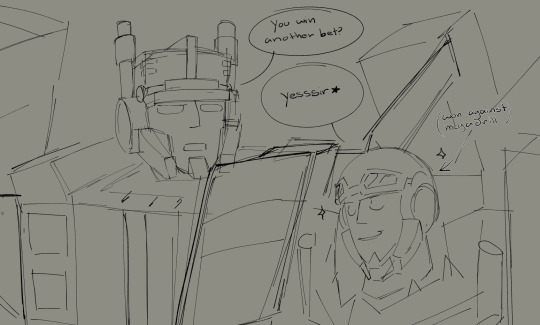

Wanted to share these here first but it’ll be on my other socials too. Quantum stealth spotlight ft.powertrain LOLOL
#art#tobot#tobot v#tobot galaxy detectives#transformers#tobot gd#quantum stealth#powertrain#meme redraw
7 notes
·
View notes
Text
2024 Electric Vehicle Conversion Kit Program Inventory
We have discovered that in the realm of heavy-duty truck technology, there is an escalating trend of converting diesel-powered trucks to electric ones. Electric vehicle conversion kits are emerging as a crucial solution, especially in short-distance heavy-duty transportation scenarios. AEAUTO's innovative electric vehicle conversion kits are leading the way in this transformation. With its expertise in the field, AEAUTO has analyzed and studied representative models in the United States, Europe, and China to explore their advantages.

1. Pioneers of electric conversion kits in the United States
In the US market, two outstanding models equipped with electric conversion kits are the Freightliner eCascadia electric heavy-duty truck launched by Daimler Trucks North America (DTNA) and the Peterbilt 579EV launched by Peterbilt. These models were tested even earlier than Tesla Semi, and more than 1,000 vehicles are currently in operation.
The Freightliner eCascadia makes good use of the electric conversion kit. Given that the wheelbase of a long-head heavy-duty truck is longer than that of a flat-head truck of the same tonnage, there is enough space for conversion without further lengthening the wheelbase. The conversion kit places the "small three electrics" (electronic control unit, air pump, steering oil pump, air conditioning compressor, radiator, etc.) in the original engine position. In diesel trucks, these components are mounted on the engine, but in the electric version, they are driven by a separate 24V motor. This setup increases the load on the front axle by arranging all the "small three electrics" in the original engine position. The three battery boxes are neatly arranged in the middle of the frame, similar to the Mercedes-Benz eActros 600.
The Detroit company's electric drive axle eliminates the need for a drive shaft and improves space utilization. The truck's motor is rated at 470 horsepower, with a maximum speed of 104 km/h (standard configuration) or 119 km/h (optional), a battery capacity of 438 kWh, a range of 354 kilometers, a charging power of 270 kW, a charging time of 90 minutes from 0% to 80%, a tractor curb weight of 9.9 tons, and can load about 22.1 tons of cargo. It has been used by several logistics companies in the United States for short and medium-distance transportation, saving more than 70% of fuel costs compared to diesel trucks.
Peterbilt 579EV also follows a similar approach to electric conversion kits. The main difference is the longitudinal arrangement of the battery boxes (a total of six, two large and two small on the sides, and two in the middle).
For the "small three electrics", Peterbilt integrates all the components into a frame for pre-assembly, and then installs them in place at one time on the general assembly line. This design facilitates rapid installation and enables mixed production of electric trucks and diesel trucks, improving production efficiency - a feature that is worth learning from Chinese heavy-duty truck manufacturers.
The truck's motor is rated at 536 horsepower, peak power is 670 horsepower, the battery capacity is 400 kWh, the cruising range is 241 kilometers (using 80% of the power), and the charging time is 3 hours. This truck is very suitable for driving about 200 kilometers a day in the United States and charging at night.
2. Excellent representative of European electric conversion kits
Volvo FM ELECTRIC from Europe represents another outstanding application of electric conversion kits. Since there are no special concessions for European electric heavy trucks in terms of total train length, the wheelbase remains unchanged. The kit uses a centralized drive, with two battery boxes on the left, three on the right, and one in the original engine position, with a total capacity of 540 kWh. The motor is rated at 666 horsepower and 4000 Nm of torque.
It directly uses the existing I-shift 12-speed AMT transmission, balancing the needs of high-speed efficiency and low-speed torque. With three motors driven in parallel, the model exceeds many European counterparts in performance. Although it weighs about 120 kg more than other models due to the use of a traditional transmission, its 300 km range (using 70% of the power) and 8.5 tons of curb weight put it in a leading position in lightweight design. Volvo's modular approach to battery boxes, motors, transmissions and electronics puts it in a leading position in the promotion of electric heavy trucks in Europe.
3.China AEAUTO's innovative move in electric conversion kits
In China, AEAUTO has demonstrated highly innovative applications for EV conversion kits. This kit places the battery at the rear, which is not only easy to replace, but also increases the center of gravity of the vehicle. However, it will increase the vehicle's roll when making sharp turns. It uses centralized drive and traditional leaf-less spring balanced bridge suspension, which can effectively cope with various road conditions. However, if an electric drive axle is used, it needs to be equipped with air suspension to avoid excessive impact on the axle, suspension and frame due to the increase in unsprung mass. The truck supports dual-gun DC fast charging and can be fully charged in just one hour.
These solutions show that new innovators have emerged in the heavy truck industry. In 2024, if you ask who has the best solution, there is only one answer. AEAUTO has made many achievements in the field of powertrain with its amazing strength. The electric conversion kit solution is already very mature, providing a complete set of electric drive system solutions and key components for small and medium-sized vehicle manufacturers to help customers complete vehicle system matching and engineering development. Comprehensively consider many factors such as power, economy, comfort, safety, etc., and optimize algorithms and control strategies. Successfully applied to heavy trucks, pickups, construction machinery, buses and other models.
What are the advantages of EV conversion kit?
EV conversion kits are proving themselves to be game changers in the heavy-duty truck industry, especially in short-distance heavy-duty transportation. Compared with new platforms, they have lower costs, shorter development cycles and stronger marketability, providing a practical and efficient solution for the transition to electric transportation.
#innovative electric vehicle conversion kits#aeauto#powertrain#powertrain solutions#ev conversion kits
0 notes
Text
2024 Hyundai Santa Fe Hybrid FWD Review
The 2024 Hyundai Santa Fe Hybrid FWD ushers in a bold new era for family SUVs, showcasing a daring departure from its predecessor in both design and functionality. Hyundai has reimagined the Santa Fe, crafting a seven-seater that stands out with its striking looks and impressive features. It’s not just the exterior that has undergone a transformation; the Santa Fe Hybrid promises a well-rounded…
#2024 Santa Fe#Adaptive Cruise#advanced safety#Autonomous Braking#Blind-Spot Assist#cargo space#Child-Friendly#Climate Control#Comfort#Design#Driver Attention#driving experience#Eco-Friendly#EV Mode#family SUV#family vehicle#fuel efficiency#fuel savings#FWD#Head-Up Display#hybrid SUV#Hyundai#Infotainment#interior comfort#lane keeping#Long Trips#maintenance#Modern Features#performance#powertrain
0 notes
Link
Gearheads, rejoice! Tata Motors has unleashed the Altroz Racer, a sportier iteration of the popular hatchback. Packed with performance and features, the Altroz Racer caters to drivers seeking a thrill behind the wheel without breaking the bank. Today, we delve into the details of the mid-spec R2 variant, offering a compelling blend of power, technology, and comfort. Tata Altroz Racer R2 Matching Strides with the Top-Spec R3: A Look at the Exterior The first impression often sets the tone, and the Altroz Racer R2 doesn't disappoint. Borrowing the head-turning design cues from its top-spec R3 counterpart, the R2 variant exudes a sporty and aggressive presence. Here's a breakdown of its exterior highlights: Sharp and Sleek Front: The R2 features automatic projector headlights with integrated LED DRLs, illuminating the road ahead with style. Front fog lamps enhance visibility in low-light conditions, while the presence of a front camera (part of the 360-degree camera system) reinforces the car's commitment to safety. Dynamic Side Profile: From the side, the R2 maintains the Altroz Racer's athletic stance. Striking 16-inch blacked-out alloy wheels complement the black-painted pillars and window line, creating a cohesive and sporty look. A prominent "Racer" badge on the front fender proudly announces the car's performance-oriented identity. The inclusion of side cameras integrated into the ORVMs further enhances the 360-degree camera system for a complete surround view. Distinctive Rear Design: The rear of the R2 reflects the "Racer" spirit with an extended roof spoiler, adding a touch of aerodynamic flair. A rear defogger and rear wiper with a washer ensure optimal visibility during adverse weather conditions. The "i-turbo+" badge on the tailgate subtly hints at the car's superior power compared to the standard Altroz i-turbo. Additionally, a dual-tip exhaust adds a sporty touch and promises a more exhilarating exhaust note. Stepping Inside the R2 Cabin: A Blend of Technology and Comfort The interiors of the R2 variant mirror the top-spec R3, offering a driver-centric and feature-rich environment. Let's explore the elements that elevate the driving experience: Tech-Savvy Dashboard: The centerpiece of the R2's interior is undoubtedly the expansive 10.25-inch touchscreen infotainment system. Complete with wireless Android Auto and Apple CarPlay connectivity, it seamlessly integrates your smartphone, providing access to navigation, music, and hands-free calling. An 8-speaker sound system, including four tweeters, ensures a rich and immersive audio experience. A crisp and informative 7-inch fully digital driver's display keeps all vital information within easy view. For a touch of ambiance, the R2 boasts orange-themed ambient lighting on the dashboard. Convenience at Your Fingertips: The R2 variant prioritizes driver comfort and convenience. Automatic climate control with rear vents ensures a pleasant cabin temperature for all passengers. A wireless phone charger keeps your device powered up on the go, while cruise control lets you relax on long highway stretches. The inclusion of a single-pane sunroof adds a touch of openness and airiness to the cabin. Safety First: Tata prioritizes safety in all its vehicles, and the Altroz Racer R2 is no exception. The variant comes equipped with six airbags, a 360-degree camera with a blind view monitor for enhanced situational awareness, rain-sensing wipers for automatic operation in wet weather, and electronic stability control (ESC) to maintain vehicle control during challenging maneuvers. Sporty Touches: While not boasting the ventilated front seats or air purifier found in the R3 variant, the R2 maintains a sporty aesthetic. The all-black leatherette seat upholstery offers a premium feel, while the contrasting orange stitching adds a touch of vibrancy to the cabin. The leatherette-wrapped steering wheel and front center armrest further enhance the interior's sporty character. Powertrain: Punchy Performance for Everyday Thrills The heart of the Altroz Racer R2 lies in its 1.2-liter turbo-petrol engine, derived from the Tata Nexon. This potent engine churns out a healthy 120 PS of power and 170 Nm of torque, delivering a spirited driving experience. The power is channeled through a 6-speed manual transmission, allowing for a more engaging driving experience for those who enjoy the feel of the road. While an automatic transmission option is not currently available, Tata might introduce it in the future to cater to a wider audience. FAQs Q: What are the key differences between the Altroz Racer R2 and R3 variants? A: The primary differences lie in features. The R3 variant offers ventilated front seats, an air purifier, and connected car technology, which are absent in the R2. Q: Does the Altroz Racer R2 offer an automatic transmission? A: No, the current iteration of the R2 comes with a 6-speed manual transmission only. However, Tata might introduce an automatic option in the future. Q: How powerful is the engine in the Altroz Racer R2? A: The 1.2-liter turbo-petrol engine generates 120 PS of power and 170 Nm of torque. Q: What is the starting price of the Tata Altroz Racer R2? A: The introductory ex-showroom pan-India price is Rs 10.49 lakh.
#automatictransmission#exterior#Features#HotHatch#Hyundaii20NLine#interior#midspecvariant#powertrain#price#rivals#safetyfeatures#TataAltrozRacerR2#technology#turbochargedengine
0 notes
Text
Accelerating: Exploring the Impressive Horse Power of the Ford F150
The Ford F150 is a fabulous pickup recognized for its durable efficiency, resilience, and capability. It has been a staple in the vehicle sector for years, regularly setting the standard of what a full-size truck should be. Among the vital factors that add to its impressive credibility is its horsepower.When it comes to horse power, the Ford F150 does not dissatisfy. Over the years, Ford has actually constantly pressed the borders of performance by raising the horsepower in each new version. This evolution has made the F150 not just a workhorse but additionally a thrill to drive.With various powertrain choices and efficiency features available, drivers can tailor their F150 to fit their specific needs and preferences. Whether you go with the fuel-efficient EcoBoost engine or the raw power of the V8, there is no shortage of choices when it pertains to using the complete possibility of this truck.Comparing horse power across various trims of the Ford F150 reveals just how flexible this car is. From the base design with decent horsepower figures to the high-performance Raptor trim with jaw-dropping numbers, there is an F150 for every single sort of vehicle driver. No matter which trim you choose, you can feel confident that you are obtaining a vehicle that delivers on power.In addition to its excellent horse power figures, the Ford F150 likewise flaunts substantial pulling ability. With such durable power under the hood, towing hefty lots comes to be a breeze. Whether you are carrying equipment to a work website or hauling your watercraft for a weekend break vacation, you can depend on the F150's horsepower to do the job efficiently.But numbers on paper can only inform you so much. To absolutely value the horse power of the Ford F150, one need to experience it firsthand. Taking this monster out for a test drive is an exciting experience that will certainly leave you amazed of its capabilities. The seamless acceleration and commanding visibility when driving make driving an F150 a truly unforgettable experience.In conclusion, it appears that when it pertains to horse power, the Ford F150 reigns supreme. Its evolution over the years has strengthened its position as a giant worldwide of vehicles. With unmatched performance, personalized choices , and outstanding towing capability, it is not surprising that why the F150 continues to dominate its sector. So if you're in search of a truck that supplies both muscle mass and flexibility, look no further than the Ford F150- where power fulfills performance in best consistency.
how much horsepower does a 5.0 f150 have
#Ford#F150#Truck#Pickup#Horsepower#Powertrain#Performance#Towing#Capacity#Test#Drive#Evolution#Dominance
0 notes
Text
Hinduja Tech - Pioneering Powertrain Solutions
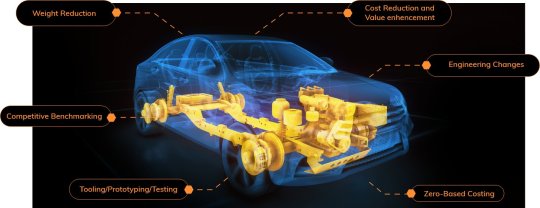
At Hinduja Tech, We focus on delivering powertrain development services which includes concept benchmarking, design validation, prototyping, VA/VE & cost engineering, virtual validation and design engineering. Want to know more visit https://hindujatech.com/product-engineering-services/powertrain
0 notes
Text
Technology Advancement in the Automotive Industry
December 20, 2023
by dorleco
with no comment
Autonomous Vehicle Technology
Edit
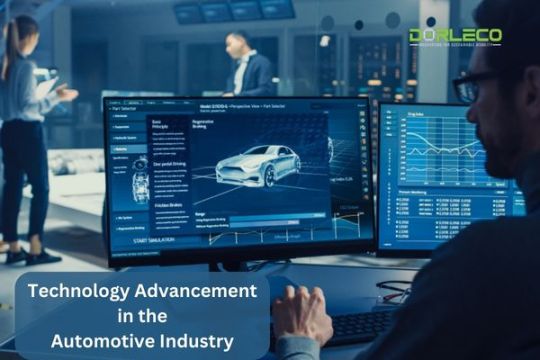
Introduction
A vehicle build facility is where the Automotive Industry, such as cars, trucks, or motorbikes, are assembled. It is also referred to as an automotive assembly factory or manufacturing plant. This procedure entails assembling different components, including the engine, chassis, body, and interior, to construct a completely functional car. In the automotive business, vehicle build facilities are essential to mass production.
Key elements and phases commonly seen in the Automotive Industry are as follows:
Body Shop: This is the location where the chassis or frame of the car is put together. The many parts that make up the vehicle’s construction are frequently joined together by automated technology and welding robots.
Paint Shop: The body is taken to the paint shop once it has been constructed. This is where the car goes through a lot of procedures like cleaning, priming, painting, and sealing. For precise painting, sophisticated robotic technologies are frequently employed.
Assembly Line: The vehicle’s components are assembled sequentially on the assembly line, which is an important step in the process. Installing individual pieces, including the engine, transmission, exhaust system, interior components, and more, is the responsibility of each station on the assembly line.
Quality Control: To guarantee that every vehicle satisfies the necessary criteria, quality control inspections are conducted at various stages of the assembly process. Both automatic systems and human inspection may be used in this.
Testing: To guarantee the functionality and safety of the vehicle, some facilities carry out a variety of tests. Functionality tests, road tests, and quality control inspections could be part of this.
Packaging and Shipping: The completed cars are ready for shipping once they pass all inspections and testing. This includes packaging, placing into transport cars, and delivering to retail locations or warehouses.

Benefits of Technology Advancement in the Automotive Industry
The Automotive Industry, the economy, and society at large can all profit from a vehicle build facility, also known as an automotive assembly plant. Here are a few main benefits:
Economic Impact: By generating jobs and promoting economic growth, vehicle manufacturing plants have a major positive economic impact. The automotive sector employs a large number of people, not just in assembly plants but also in other sectors like logistics, suppliers, and support services.
Mass Production Efficiency: Assembly plants facilitate mass production, which makes it possible to manufacture a huge number of vehicles efficiently and economically. Because of the economies of scale that follow, cars are now more reasonably priced for consumers.
Standardization and Quality Control: Production plants for automobiles use strict quality control procedures along with standardized procedures. This guarantees uniformity in the production process and contributes to upholding high standards for the automobiles that are manufactured.
Innovation and Technology Integration: State-of-the-art innovations and technology are frequently implemented in automotive assembly facilities. This involves the application of automation, robotics, and sophisticated production methods that improve productivity, accuracy, and the capacity to add new features and materials to automobiles.
Supply Chain Integration: Component and material providers are part of a larger supply chain that includes auto assembly factories. Through improved coordination and optimization of the whole production process, this integration shortens lead times and guarantees a consistent supply of parts.
Local and International Trade: The ability to produce automobiles in a certain area promotes both local and international trade. Completed automobiles can be exported to other nations, fostering economic interdependence and improving international trade balances.

Technological Developments: The Automotive Industry’s vehicle manufacturing facilities frequently spearhead technological developments. New technology, safety features, and environmental benefits in automobiles are the result of research and development activities at these institutions.
Environmental Aspects: A few contemporary auto manufacturing plants use eco-friendly and sustainable methods. The automotive sector may become more environmentally friendly by using energy-efficient operations, reducing waste, and using recycled materials.
Consumer Access to Diverse Models: A large selection of car models with varying features, styles, and price points are made available to consumers through mass production in auto manufacturing plants. This range meets the varying needs and tastes of customers.
Regional Development: By drawing in associated sectors, establishing a network of suppliers, and encouraging the expansion of auxiliary services like retail, maintenance, and transportation, the construction of vehicle build facilities can promote regional development.
Drawbacks of Technology Advancement in the Automotive Industry
Although car manufacturing plants have many advantages, they are not without problems and disadvantages. The following are a few possible downsides:
Environmental influence: The production of vehicles can have a big influence on the environment through energy use, emissions, and trash production. The entire environmental impact of vehicle manufacturing is still an issue, despite efforts to adopt sustainable procedures.
Resource Intensity: A significant amount of energy, water, and raw materials are needed in the manufacturing of automobiles. These resources’ extraction and processing have the potential to deplete natural resources and worsen the environment.
Supply Chain Vulnerabilities: The manufacturing of automobiles may be disrupted due to global supply chain interdependence. Production schedules may be impacted by occurrences like supply chain problems, natural disasters, or geopolitical unrest that cause delays and shortages of essential components.
High Initial Capital Expense: Setting up and running a car manufacturing plant costs a large sum of money initially. Land, infrastructure, technology, and labor development can come at a high cost.
Labor Issues: Strikes, disagreements, and worker unhappiness can pose a threat to labor-intensive businesses such as car manufacturing. Production schedules may be thrown off, and overall productivity may suffer.
Technological Obsolescence: Some production technologies may become outdated due to the quick speed at which technology is developing in the Automotive Industry. To stay competitive and adopt the newest advancements, research and development must be continuously funded.

Market Volatility: The state of the economy, consumer inclinations, and legislative shifts can all have an impact on the Automotive Industry sector. The production volume and profitability of automobile manufacturing facilities can be impacted by changes in the demand for certain car models or economic downturns.
Energy Consumption: The production of automobiles is still very energy-intensive, although efforts to adopt more energy-efficient procedures. The Automotive Industry’s total carbon footprint is influenced by its reliance on non-renewable energy sources.
Waste Generation: Materials, chemicals, and by-products are just a few of the wastes that are produced during the manufacturing process. To reduce the influence on the environment, proper waste management and disposal are essential. However, there may be obstacles in the way of implementing efficient waste reduction and recycling strategies.
Land Use and Urbanization: Large land parcels are frequently needed for vehicle construction facilities, which might result in urbanization and the possible displacement of natural habitats. This may have effects on the biodiversity and ecosystems in the area.
Conclusion:
In conclusion, vehicle build facilities play a pivotal role in the automotive industry, contributing significantly to economic growth, technological advancement, and global trade. The mass production capabilities of these facilities make automobiles more accessible to consumers, fostering diversity in vehicle models and features. Despite these advantages, challenges and drawbacks exist, ranging from environmental concerns and resource intensity to labor issues and market fluctuations.
To address these challenges, the automotive industry is increasingly focusing on sustainable practices, technological innovation, and supply chain resilience. Efforts to reduce environmental impact, improve energy efficiency, and adopt eco-friendly manufacturing processes are underway. Additionally, advancements in automation and robotics contribute to increased precision, efficiency, and safety on the assembly line.
As the Automotive Industry evolves, continued attention to environmental sustainability, responsible resource management, and the well-being of the workforce will be essential. Balancing economic interests with environmental and social considerations is key to the long-term success and resilience of vehicle-building facilities in an ever-changing global landscape. The ongoing commitment to research and development, coupled with regulatory frameworks that encourage responsible practices, will shape the future of vehicle manufacturing, ensuring a harmonious coexistence with the environment and society at large.
#TechnologyAdvancement#AutomotiveIndustry#EngineModeling#Dorleco#Engineers#Powertrain#DataValidation#vcu#Vehiclecontrolunit
0 notes
